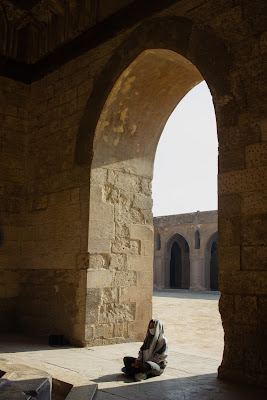Introduction:
Photo by engy ibrahim on Unsplash
Ibn Battuta, a 14th-century Moroccan scholar and explorer, embarked on one of the most extensive journeys of his time, leaving an indelible mark on the annals of travel history. His expeditions, spanning over three decades, took him across the Islamic world, Africa, Asia, and Europe, covering a distance that surpassed the travels of his contemporaries. In this article, we embark on a virtual journey following in the footsteps of Ibn Battuta, exploring the fascinating destinations and cultural encounters that shaped his remarkable adventures.
The Early Years: Born in Tangier in 1304, Ibn Battuta started his journey at the age of 21, initially setting out on a pilgrimage to Mecca. What began as a religious pilgrimage transformed into a lifetime of exploration, discovery, and cultural exchange. Ibn Battuta's insatiable curiosity and the spirit of adventure led him far beyond the pilgrimage route, taking him to lands unknown.
Africa: Crossing the Sahara Desert: Ibn Battuta's first major expedition led him across the vast expanse of North Africa. Traversing the Sahara Desert, he encountered nomadic tribes, witnessed the breathtaking landscapes, and experienced the challenges of navigating the arid terrain. His travels took him through the vibrant cities of Morocco, the trading hubs of West Africa, and the bustling markets of Timbuktu.
The Middle East: Pilgrimage and Beyond: Reaching Mecca, Ibn Battuta fulfilled his initial pilgrimage goal, but his wanderlust was far from sated. He explored the cities of the Middle East, including Damascus, Cairo, and Medina, immersing himself in the rich history, architecture, and diverse cultures of the region. His encounters with scholars, rulers, and fellow travelers further fueled his desire to explore the unknown.
Asia: The Silk Road and Beyond: Ibn Battuta's journey continued eastward, navigating the Silk Road and venturing into Central Asia, India, and Southeast Asia. Along the way, he marveled at the technological advancements, cultural diversity, and economic prosperity of the regions he visited. His vivid accounts provide valuable insights into the medieval societies and trading networks that thrived along these ancient routes.
China: A Glimpse into the East: Ibn Battuta's travels eventually led him to the Yuan Dynasty in China, where he served in the court of the Mongol emperor. His observations of Chinese society, customs, and governance offer a unique perspective on a civilization vastly different from his own. His journey illustrates the interconnectedness of the medieval world and the extent of cultural exchange across continents.
Europe: The Final Leg of the Journey: Returning to the Mediterranean, Ibn Battuta explored the cities of the Iberian Peninsula and North Africa. His encounters with European societies, including the Kingdom of Castile, showcase the intricate web of relationships and influences that characterized the medieval world.
Legacy: Ibn Battuta's extraordinary travels were chronicled in his work, "Rihla" (The Journey), providing a valuable historical record of the medieval world. His adventures continue to inspire modern-day travelers and scholars, illustrating the importance of cross-cultural dialogue and the pursuit of knowledge. Ibn Battuta's legacy endures as a testament to the transformative power of exploration and the boundless curiosity that transcends time and borders.
No comments:
Post a Comment